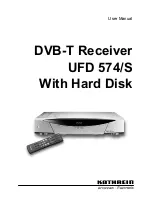
Rev. B
Doc. 6001368
TABLE OF CONTENTS
GARAGE DOOR RECEIVER PROGRAMMING AND USE GUIDE ........ 3
A. PROGRAMMING A TRANSMITTER INTO THE NARROW BAND
GARAGE DOOR RECEIVER ............ 3
B. ERASING TRANSMITTERS FROM THE
GARAGE DOOR RECEIVER....................... 3
COPYRIGHT
2000
ALL RIGHTS RESERVED
This document is protected by copyright and may not be copied or adapted without the prior written consent of
Sentex. This document contains information proprietary to Sentex and such information may not be distributed
without the prior written consent of Sentex. The software and firmware included in the ClikCard Narrow Band
Residential Garage Door Receiver as they relate to this documentation are also protected by copyright and
contain information proprietary to Sentex.
Sentex Systems
Chatsworth, CA



























